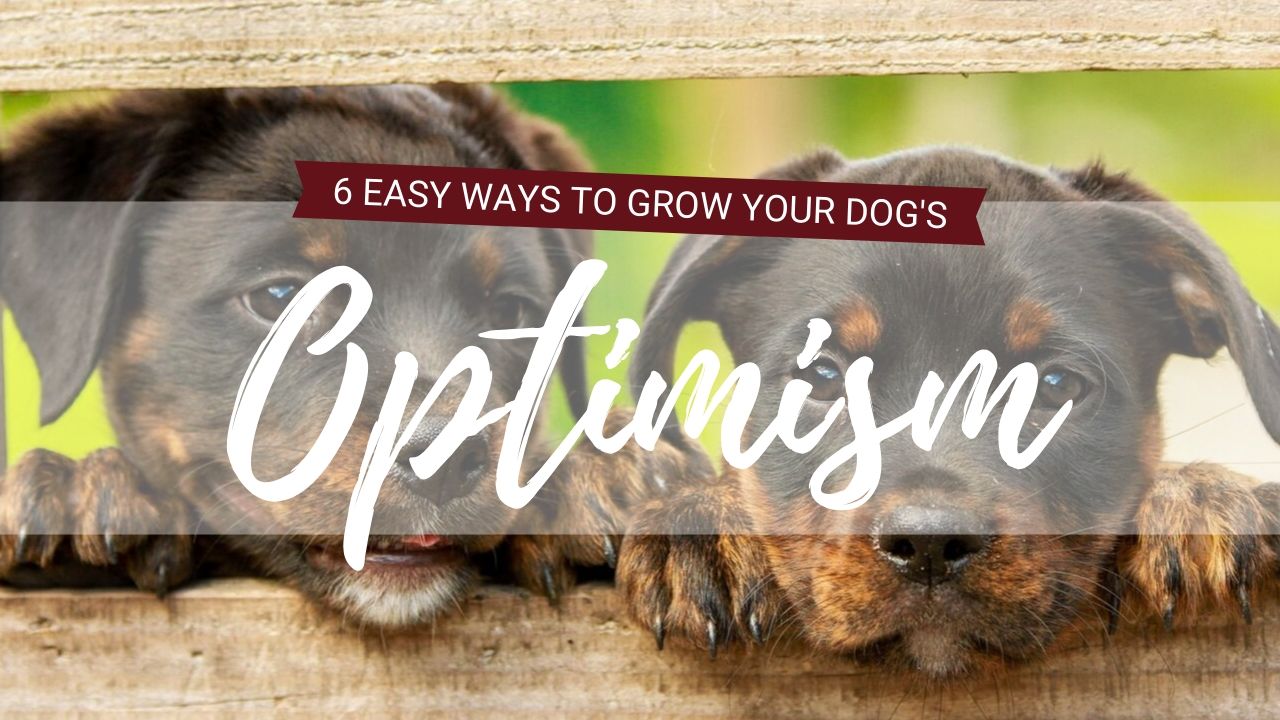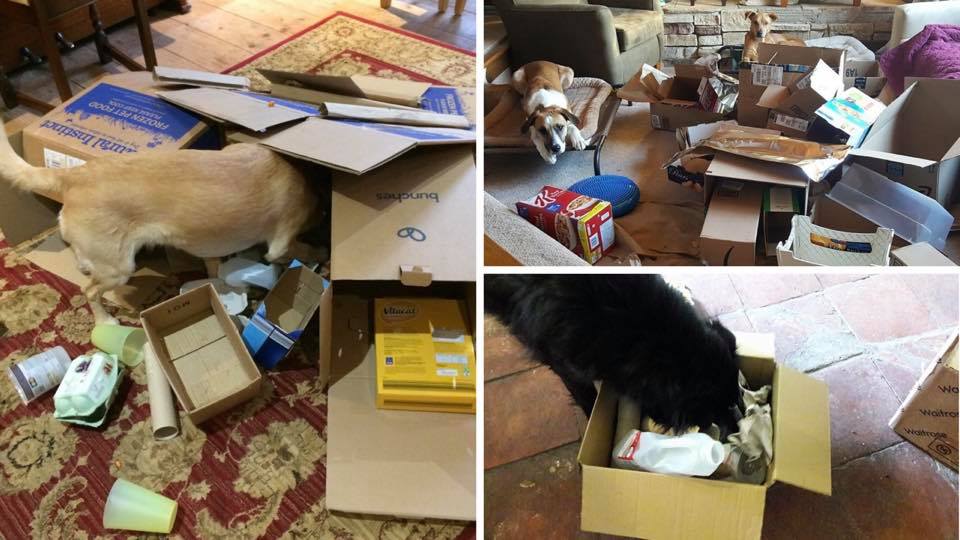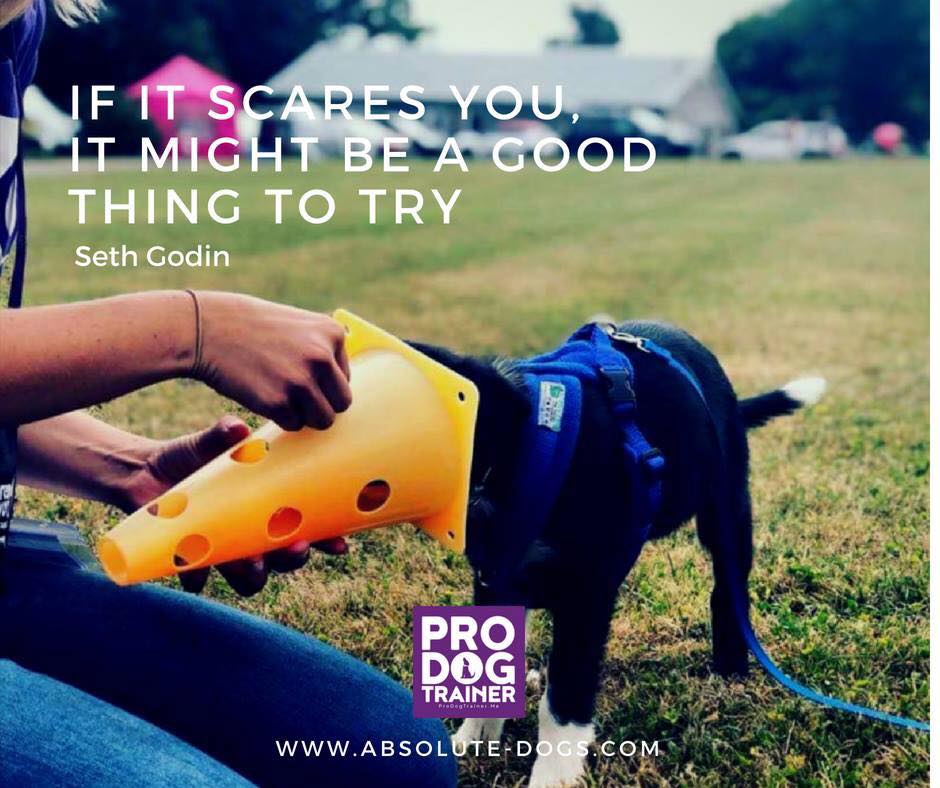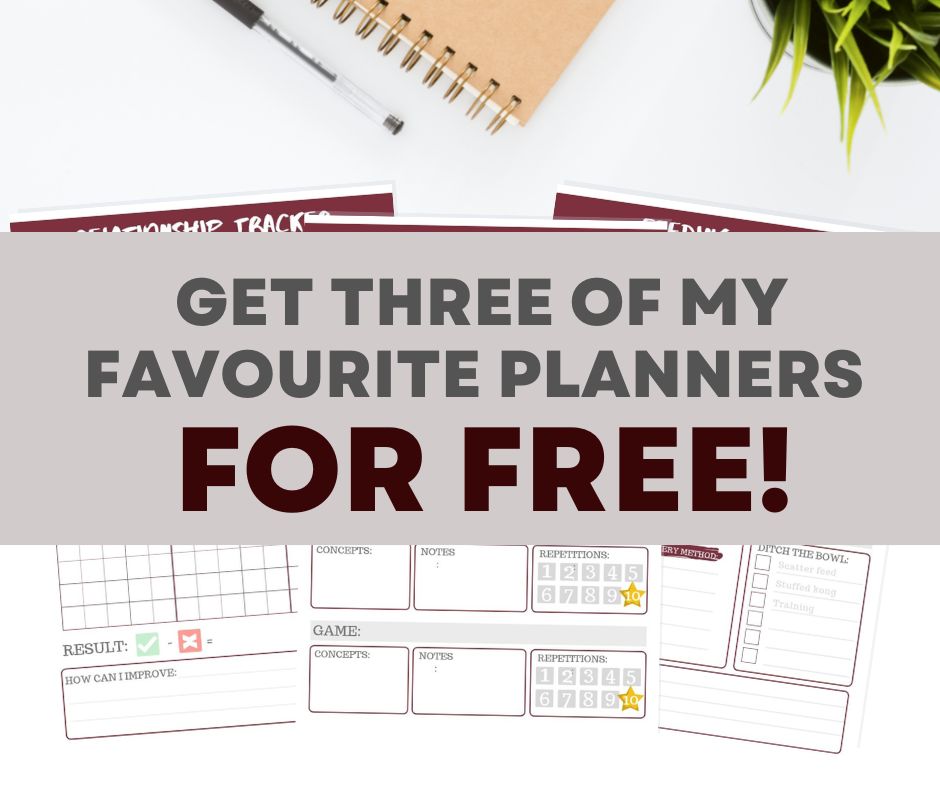Boost Your Puppy’s Confidence: 6 Quick and Easy Games

Building confidence and optimism is one of the best things you can do for your new puppy. An optimistic dog is not reactive; he is calm and confident in the face of adversity, whether that be busy streets, noisy traffic, the vet’s office, or any other scenario he is perhaps not used to.
When presented with novelty, an optimistic dog will presume it to be something good, whereas a pessimistic dog will fear the worst. Pessimists may react by quivering, crying, barking and lunging, hiding… a long list of behaviours that cause us angst as owners!
You’ve probably already read all about the benefits of ensuring your puppy is well-socialised at an early age – which involves exposing them to everything the world has to offer in terms of strange, novel or potentially frightening experiences, and encouraging a positive association whilst your puppy is young enough and flexible enough, to allow you to do so.
But what if there were other ways you could encourage your puppy to take a ‘glass half-full’ approach to life? Well, with concept training, there are! Below is just a small selection of quick and easy games you can play with your puppy to help grow an optimistic outlook in life – an approach which will deliver lifelong benefits.
1: Cardboard Chaos
This is a fantastic way to build your dog’s optimism in the face of novelty – and it’s a great way to have some fun together too! You’ll need to get creative with the contents of your recycling bin – think cardboard boxes, egg cartons, old plastic bottles (nothing sharp or harmful!) and whatever else you can lay your hands on.
Once you’ve collected enough of these building blocks, you can put together what’s playfully come to be called ‘Cardboard Chaos.’ You could lay a large box on its side and place some noisy/unevenly-surfaced objects near the opening, or you could put together a tunnel using stacked cardboard sheets… the only limit with this one is your imagination! Once your cardboard playground is complete, restrain your dog whilst you scatter some of their food throughout the chaos, then release them to dive in and find it! Whilst they’re hunting, continue to scatter more food inside boxes, underneath objects, and on top of different surfaces, to encourage your dog to build a positive association with novelty.
These objects may move when they stand on them, make strange noises, and perhaps even fall on them – but if they can learn that all of those experiences have nothing but positive outcomes (‘Yay! I found more food!’) then they’ll be far-better prepared for the big wide world!
2: Balance Path
Balance path is very similar to cardboard chaos, in that you can call upon your recycling to create it! Only this time, put it together in a clear linear pathway, as opposed to one giant freestyle playground.
You can also use other household objects as part of your pathway, such as scatter cushions, oven trays, washing up basins (either way up – or try it both ways and see which your dog struggles most with!) dining chairs (for your dog to walk under), balance pads, yoga blocks… get your creative hat on!
Once you’ve built your path, encourage your dog to walk the length of it, by scattering food along it. You may find your dog walks beside it at first – this is fine for a first go! Alternatively, you may have a dog who dashes from start to finish to get it over with. Try to slow fast dogs down by placing food slowly and deliberately in front of them as they walk, and allow dogs who are nervous about climbing on board at all, the time to get involved at their own pace.
The more you do this with your dog, the more comfortable and confident with it they’ll become.
3: Front Feet On
https://www.facebook.com/ListenDog/videos/244193906274333/
Again, there are many objects you could use for this – a balance pad, a scatter cushion, an old shoe box… any object that is safe and sturdy enough for your dog to balance their two front paws on will do.
Encourage your dog to place their front paws on the object by marking and rewarding any interaction with the object; this could include just looking at it, stepping towards it, or even sniffing it at first. Once your dog understands that interaction with the object is key, gradually raise the criteria for reward so that your dog is consistently offering the correct behaviour. This is called shaping.
Alternatively, you can lure your dog into position using food, and gradually phase out the lure once the dog understands the behaviour that’s required. Once you’ve got this behaviour on cue, you can teach it using different objects, and ask for it out and about. Ask your dog to place their front paws up on a tree stump, a door step, a concrete slab, a bench, or anything else you encounter on your outdoor adventures, and watch their confidence grow in new environments!
Giving them something else to think about whilst in a new place can help to calm anxiety and potential reactivity, and bring your dog’s ‘thinking brain’ back to the forefront of operations!
4: The Cone Game
This is a great game to play with dogs who may be required to wear a muzzle – but it’s a great optimism booster for those who don’t too! The aim of the game is to teach your dog to place their head inside a small plastic training cone, to earn a food reward.
In order to do this, your dog needs to be feeling super confident and trusting – inside that cone they can’t use their teeth or see anything in their environment… but it will earn them a fantastic reward!
When playing this game, don’t move the cone over your dog’s nose, but always allow them to move their face toward the cone first, rewarding every positive movement. Once they are consistently moving towards the cone, only reward once the tip of their nose enters the cone, and then once their whole muzzle is inside… and then up the criteria for how long they need to hold the pose!
https://www.facebook.com/ListenDog/videos/328885627865869/
If you play this often enough, you’ll end up with a dog that’s super-excited to stick their face in that cone every time you show it to them!
5: Middle
https://www.facebook.com/ListenDog/videos/1888984581374783/
This is one of our favourite games here at Listen Dog Training! Not only does it build fantastic value in proximity (got a dog that won’t recall? Play this game with them and they’ll be back by your side – or rather between your legs – in an instant!) but it’s a fantastic confidence booster. Teaching your dog to value the middle position gives them a safe space they can utilise in potentially worrying environments, and it enables you to better control any adversity your dog may face – such as being approached by a strange dog off-lead – if you can call them into this position quickly.
To teach ‘middle,’ begin with your dog behind you, and lure them forward between your legs using a piece of food. Feed them once they are in the correct position, then throw out another piece of food behind you and release and reset them for the next go. Lure them back to middle again, and repeat this until you no longer need to lure them back to the correct position, because they spring into it automatically! This is the time to pop a cue on it, and start practising daily around the home, and eventually out and about, for awesome results.
https://www.facebook.com/ListenDog/videos/574727489655260/
6: Noise Bottle or Noise Box
This is a great game for dogs that spook easily at loud or unexpected noises. Try filling a plastic bottle with old coins or tinfoil and pebbles, and encouraging your dog to investigate it. Don’t shake it in your dog’s face, but allow them to approach it at their own pace; you could tie a favourite tug toy of your dog’s to the end of the bottle, or simply place tasty food nearby. Depending on your dog’s personality, you can build up this game step-by-step; begin with an empty bottle that your dog can get used to and eat off, then gradually fill it with noisy items/increase the movement through play until your dog is unflinching in the face of plenty of noise!
An alternative to the noise bottle is the noise box, in which your dog’s dinner is placed amidst a selection of noisy items such as (safe) kitchen utensils, metal cans, etc. so that your dog must disturb the items in order to enjoy their food. Again, this can be built up gradually, introducing one item at a time over a matter of minutes, days or even weeks, until your once-nervous dog is happily clattering about, having a whale of a time for their supper!
https://www.facebook.com/ListenDog/videos/1970945556512018/
There are so many games and exercises you can play with your puppy or dog to help them build positive associations with potentially frightening sights, sounds and situations they are likely to encounter over the course of their lives; the ones described here are just a few that are quick and easy, and great to try out at home.
When working with a nervous puppy or dog, remember never to force your dog to face a situation they are clearly uncomfortable about – do not drag your dog along a balance path by their collar, or shake a noise bottle in their face if they are desperate to get away from it – this will do more harm than good!
Instead, allow them to make choices, and simply ensure that the right choices are always the most rewarding ones!
Happy playing!
Need more help with your dog training? Check out our printable planning resources right here, and follow us on Instagram and Facebook for daily tips!







